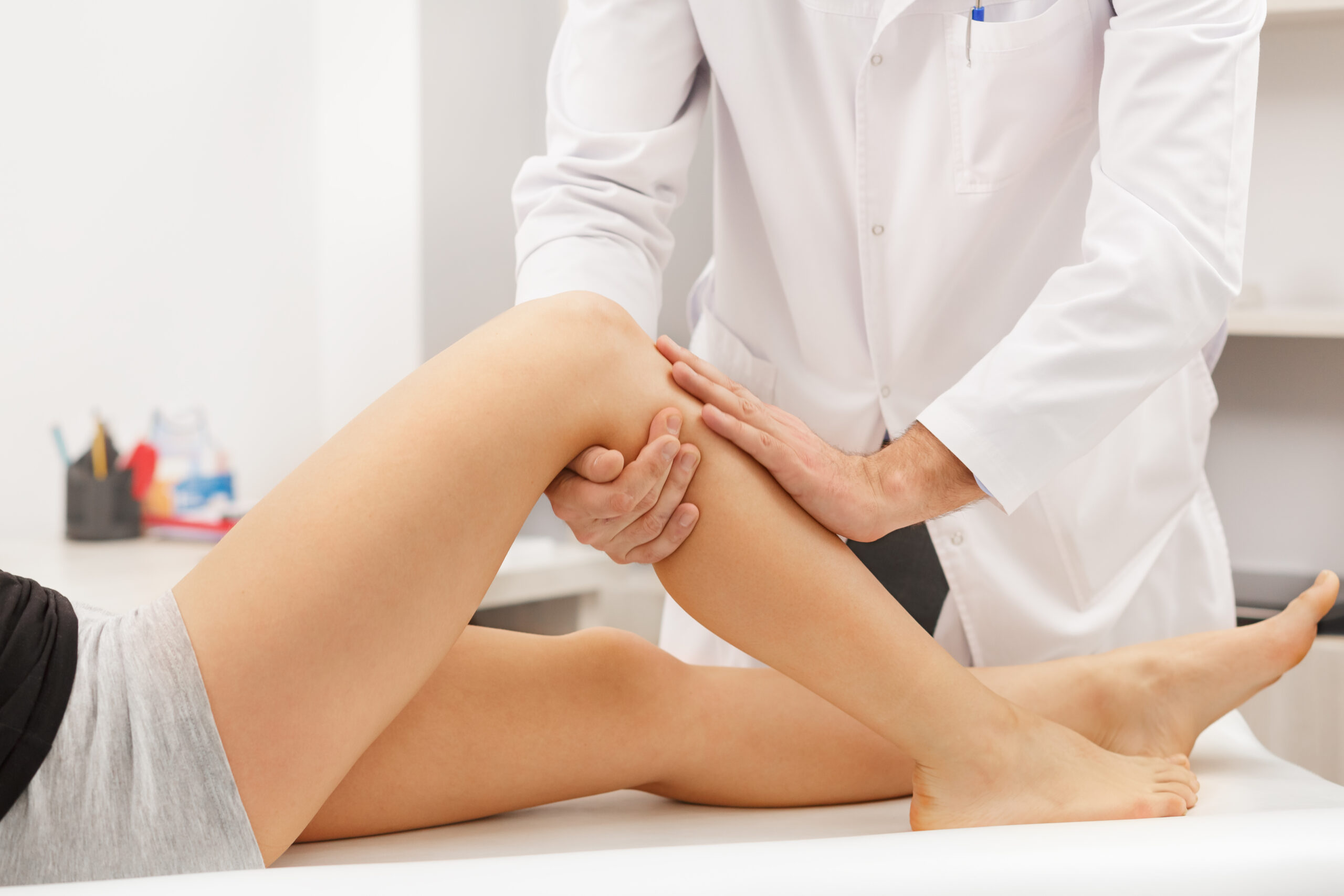Leg pain can be extremely bothersome—especially when it interferes with daily activities or causes pain when walking or sitting. Several factors can contribute to leg pain, including strains, sprains, and varicose veins. In some instances, it may indicate a serious underlying issue, such as a blood clot or infection.
Here’s more about potential causes of leg pain and signs that it’s time to see a doctor.
What Can Cause Leg Pain?
Overuse, wear and tear, and injuries are common causes. Pain may even radiate to the legs from another part of the body that is having problems, such as the lower back or spine. Poor circulation and varicose veins can also cause leg pain.
Other possible causes include:
- Dehydration
- Certain medications, such as statins and diuretics
- Muscle fatigue
- Strain or sprain
- Fracture
- Tendonitis
- Peripheral artery disease (PAD)
- Blood clots, or deep vein thrombosis (DVT)
- Bone infection
- Nerve damage, such as from diabetes or heavy alcohol use
- Arthritis
- Gout
- Slipped disc in the back
- Benign tumor or cyst
- Bone cancer
Types of Leg Pain Caused by Vein Issues
Varicose veins and DVT are the most common vein issues that can cause leg pain.
Varicose veins are enlarged, twisted veins that usually appear on the legs. They do not always cause pain, but when they do, they can cause aching or a feeling of heaviness in the legs and/or a burning and throbbing sensation. Muscle cramps and pain that gets worse when standing or sitting for long periods may also indicate varicose veins.
DVT occurs when a blood clot forms in deep veins, usually in the legs. Symptoms associated with DVT include swelling, cramping, pain in the leg that begins in the calf, and a feeling of warmth on the affected leg.
Symptoms That Require Immediate Medical Care
Varicose veins rarely cause complications; however, they can cause enough pain and discomfort to affect a person’s well-being.
DVT, on the other hand, can lead to a life-threatening complication known as pulmonary embolism (PE). PE occurs when a blood clot breaks free and gets stuck inside a blood vessel in the lung. It is the third-leading cause of cardiovascular death.
Seeing a doctor for certain symptoms associated with leg pain can reduce the risk for life-threatening complications such as PE. Signs it’s time to seek immediate medical care include:
- Swelling or redness in the leg causing pain
- Fever
- Pain that worsens when walking or exercising and that improves with rest
- Black and blue discoloration on the leg causing pain
- Cold sensation on the affected leg
- Paleness of the affected leg
- Leg pain accompanied by breathing problems
Treatment Options
Treatments for leg pain will depend on the underlying cause of the pain. For instance, a strain can be treated using rest, ice, compression, and elevation, while gout may be treated using anti-inflammatory medications.
Vein treatments for leg pain caused by vein issues will also vary based on the condition. Common treatments for varicose veins include sclerotherapy, ambulatory phlebectomy, and endovenous laser ablation.
Sclerotherapy involves the use of a foam or medication that is injected into the vein, which causes it to collapse and fade or disappear. Ambulatory phlebectomy is a procedure in which varicose veins are removed through a series of tiny incisions made into the skin. During endovenous laser ablation, a laser fiber is inserted into the varicose vein, where it heats the vein and causes it to close. All these procedures can be performed by a doctor who specializes in vein issues.
Treatments for DVT usually focus on preventing the blood clot from growing larger and from breaking loose and traveling to the lungs. This may involve the use of blood thinning medications or drugs that break up the blood clots. North Shore Vein Center provides treatment for several types of vein issues, including varicose veins, spider veins, hand veins, and facial veins. Contact us today at (516) 869-8346 to request an initial vein consultation.

